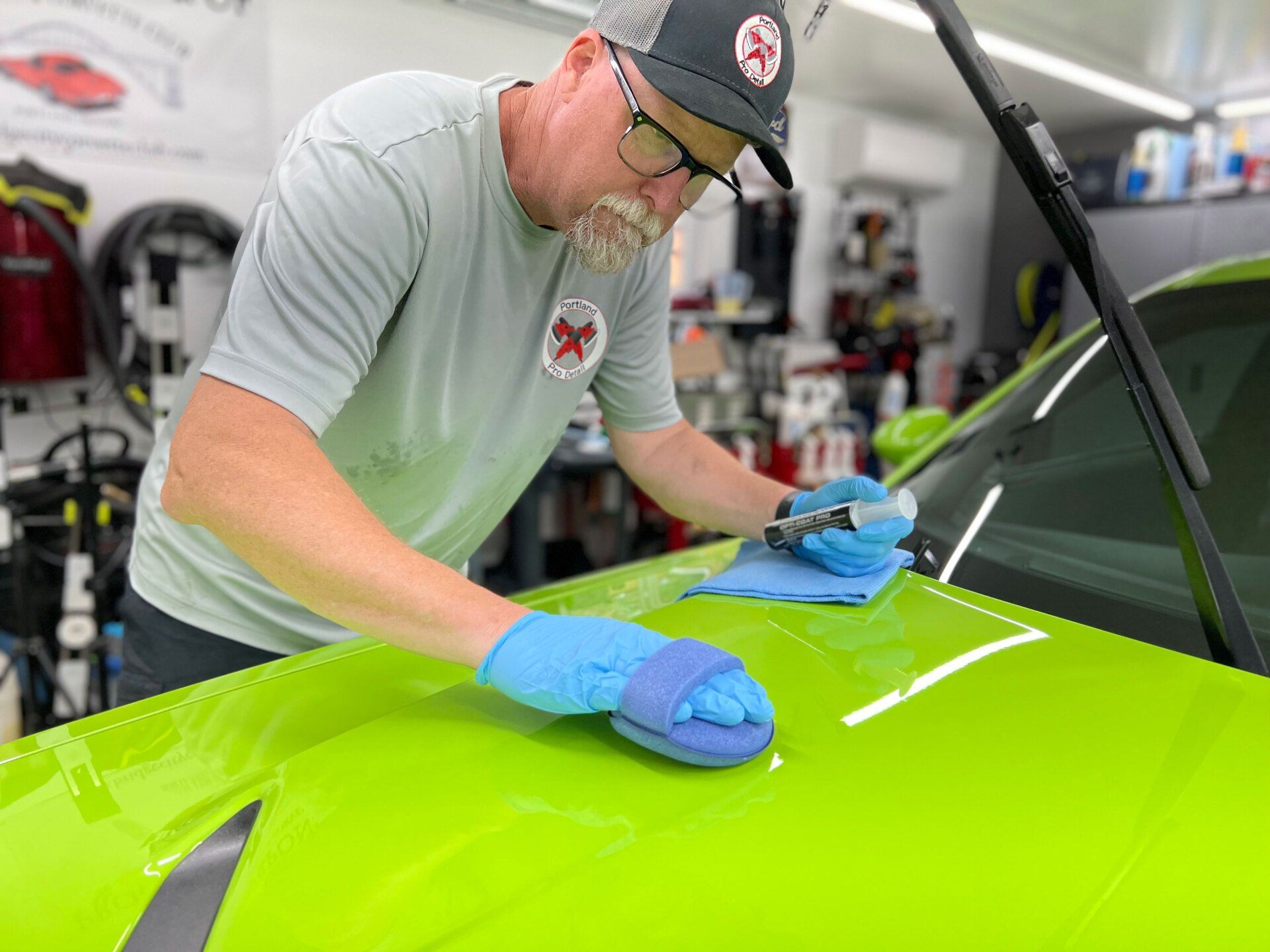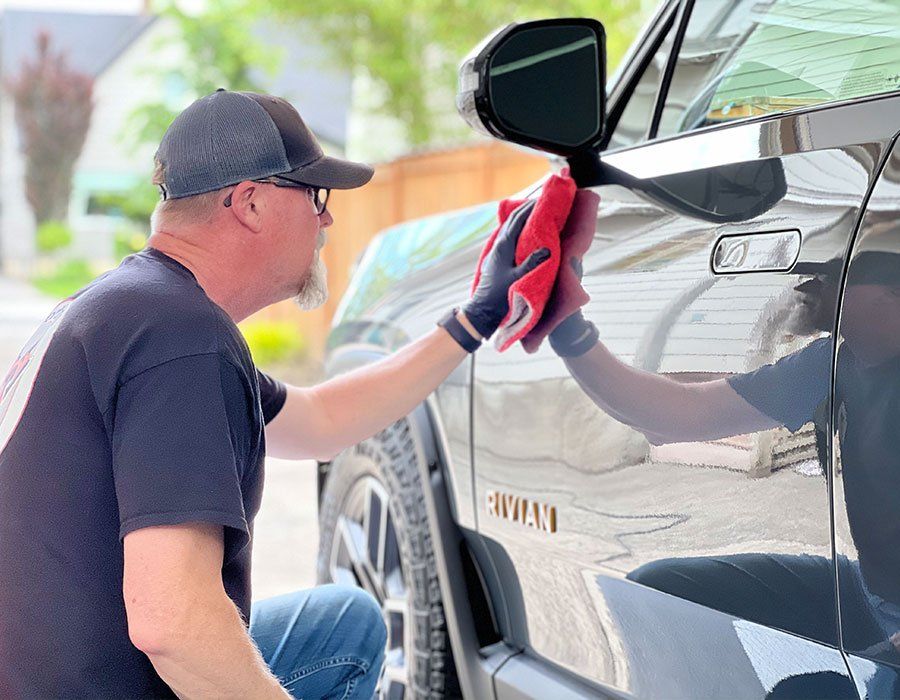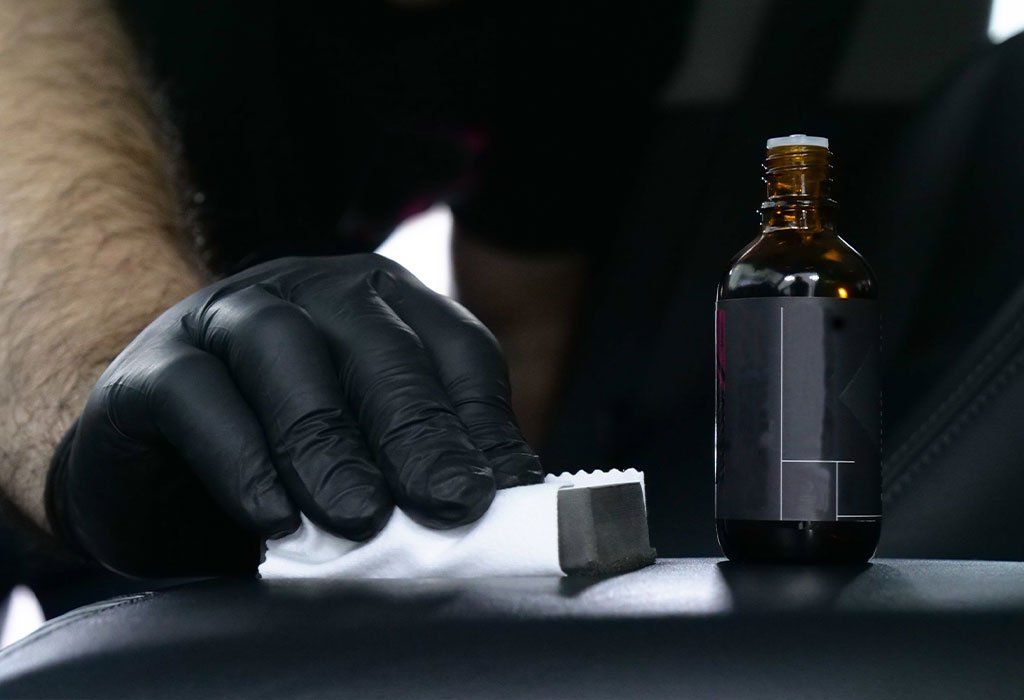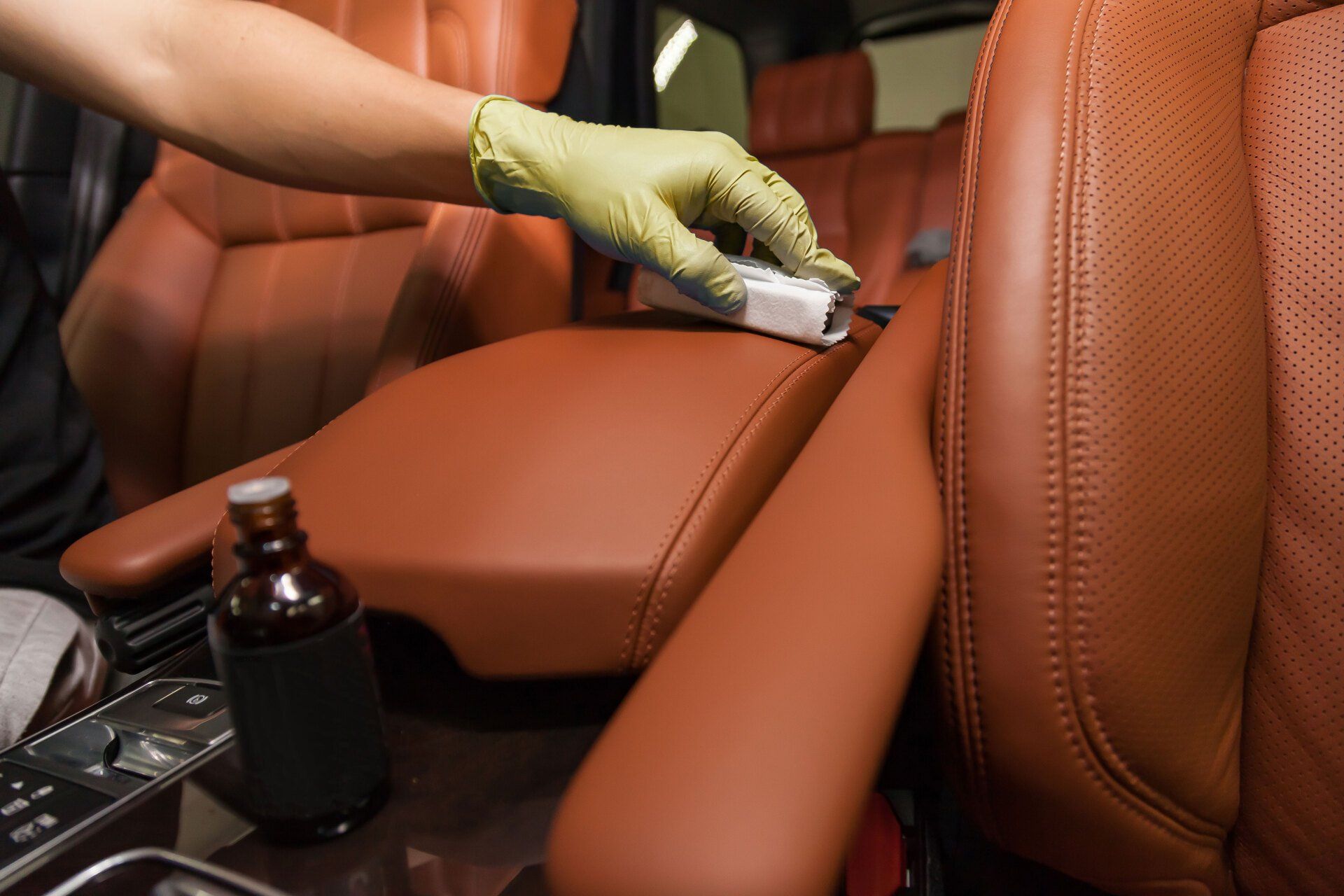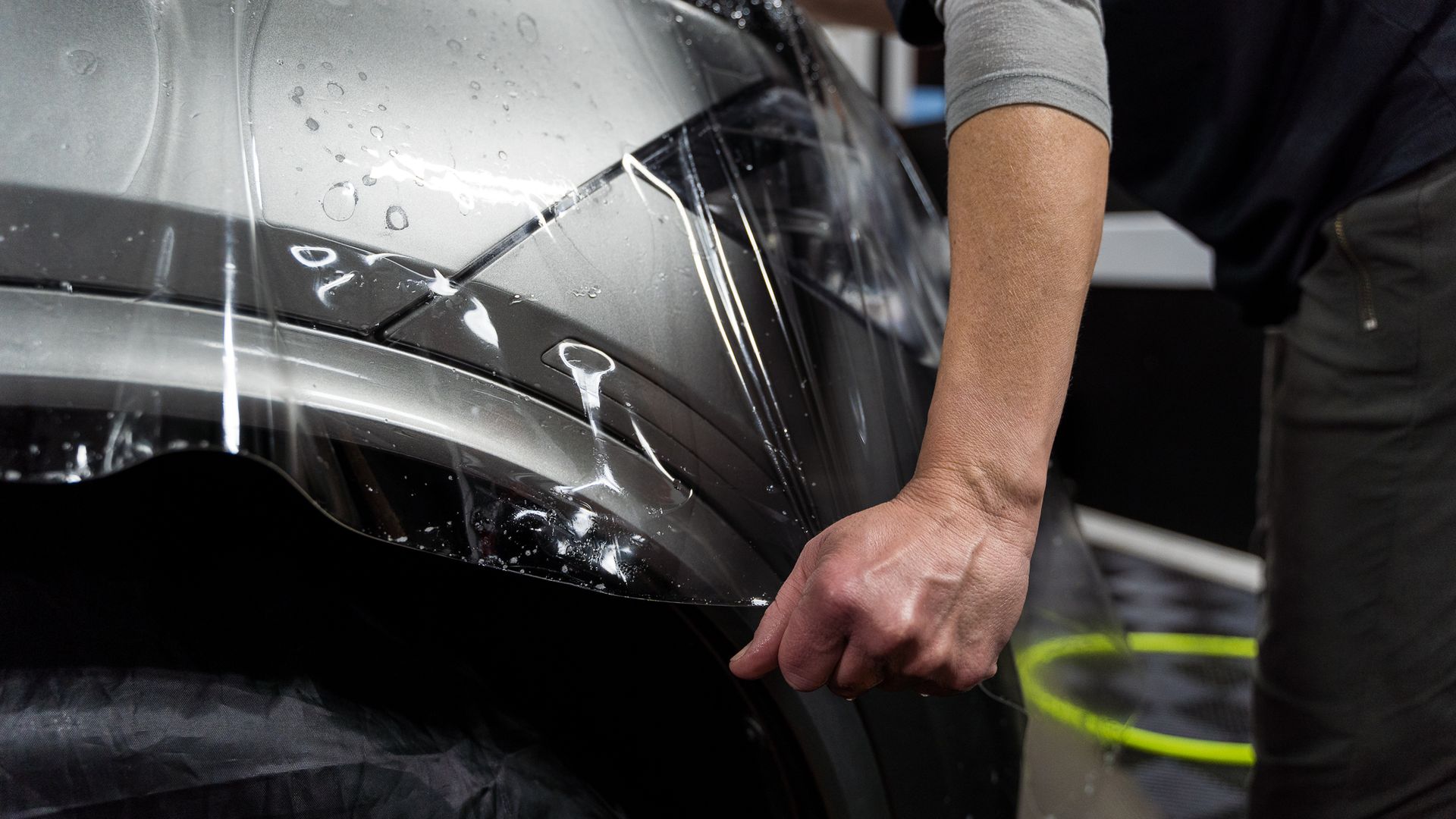How Long Do Interior Ceramic Coatings Last? A Guide to Durability
CALL (503) 444-7415
Interior ceramic coatings, when maintained properly, generally last about 2–5 years. Regular, gentle washing with a pH-neutral car shampoo and drying with microfiber towels can help protect the coating from damage. Factors such as the quality of the coating, environmental conditions, and regular cleaning routines can impact its longevity. Now let's talk about extending that life.
Extending the Life of Your Interior Ceramic Coating
Maintaining the integrity of your interior ceramic coating is crucial to ensuring its longevity. One of the most important steps in this regard is regular washing. When you wash your car, it's crucial to do so gently to avoid damaging the coating. Start by rinsing the surface gently with water to remove any loose dirt and grime. Then, use a pH-neutral car shampoo and a soft wash mitt to clean your car. Harsh cleaning products can wear down the protective layer of your ceramic coating, so opt for gentle options. Choosing the right drying method is just as important as washing with care. Avoid using any old rag or towel, as these can scratch the surface. Instead, opt for high-quality microfiber towels, which are gentle on the coating and provide effective moisture absorption.
Additionally, it’s critical to steer clear of abrasive tools, such as stiff-bristled brushes or sponges, as they can cause micro-scratches on the coating. These imperfections may not be visible at first but can accumulate over time, compromising the coating’s protection and gloss. Consider applying a ceramic coating booster product every few months to rejuvenate and reinforce the existing ceramic coating. These boosters contain similar protective ingredients found in ceramic coatings and act as an additional layer of defense against environmental contaminants. By adhering to these best practices for cleaning and maintaining your interior ceramic coating, you can extend its longevity and preserve its protective properties for longer periods, ensuring that your vehicle's interior surfaces continue to shine and remain well-protected against external elements.
Maintenance for Prolonged Durability
Routine maintenance is crucial for the long-term durability of your interior ceramic coating. Just like any valuable possession, proper care and attention will ensure that it stays in peak condition for as long as possible. It's important to understand that while interior ceramic coatings offer exceptional protection, they aren't impervious to wear and tear over time. To maximize their longevity, it's recommended to apply a top coat or ceramic booster every 3–6 months. This additional layer of shielding works wonders at renewing the hydrophobic properties, thereby enhancing the coating's durability and preserving its effectiveness. The concept behind using a top coat or ceramic booster is similar to giving your interior surfaces an extra shield against environmental elements like UV rays, harsh chemicals, and general wear. This regular top-up is a preventative measure that helps counteract the gradual breakdown of the ceramic coating due to exposure and use.
When considering which product to use for this additional layer of protection, it's vital to select a high-quality top coat or ceramic booster specifically designed for use with ceramic coatings. Not all products are created equal, so be sure to do thorough research and opt for a reputable brand known for their expertise in surface protection. In addition to applying a top coat or ceramic booster, it's essential to incorporate regular maintenance routines such as gentle washing and proper drying. This fundamental upkeep ensures that dirt, grime, and contaminants don't accumulate on the coated surfaces, preserving both their aesthetic appeal and protective qualities.
While most interior ceramic coatings boast impressive chemical resistance levels, it's crucial to avoid using aggressive cleaning agents that could compromise the coating's integrity. Stick to pH-neutral cleaners and mild detergents when cleaning your vehicle's interior surfaces to prevent unnecessary strain on the ceramic coating. By integrating these maintenance practices into your regular vehicle care routine, you're taking proactive steps to uphold the durability and effectiveness of your interior ceramic coating. This commitment to consistent care will undoubtedly pay off in the long run, ensuring that your surfaces remain protected and visually stunning for years to come.
UV Protection and Heat Resistance in Ceramic Coatings
Ultraviolet (UV) rays from the sun can be quite harsh on surfaces, causing colors to fade and materials to degrade over time. Your car's interior, exposed to direct sunlight every day, might start looking dull, and the vibrant leather seats could lose their color. This is where ceramic coatings come to the rescue. They act as a shield, protecting your vehicle’s interior surfaces from harmful UV rays. This UV protection feature in interior ceramic coatings ensures that the interior surfaces of your car, such as the dashboard, seats, and any other areas exposed to sunlight, maintain their original color and texture. By preventing fading and discoloration, ceramic coatings help preserve the aesthetic appeal and value of your vehicle's interior.
Additionally, interior ceramic coatings are known for their exceptional heat resistance capability. Ceramic coatings safeguard your vehicle's interior from high temperatures. When your car is parked under the scorching sun, the interior ceramic coating acts as a barrier, preventing heat damage to the interior surfaces. This means there is no more worrying about cracked dashboards or seats due to extreme heat exposure. Imagine taking a drive on a hot summer day. With a reliable interior ceramic coating applied to your car's interior surfaces, you can rest assured that they are well protected from the damaging effects of both UV rays and elevated temperatures.
The enhancement of UV protection and heat resistance provided by interior ceramic coatings not only ensures the longevity of your car's interior but also reduces the need for frequent maintenance and repairs caused by sun damage. This contributes significantly to maintaining the pristine appearance and structural integrity of your vehicle's interior over time.
Techniques to Keep Your Vehicle’s Interior Cool
When it comes to keeping your car's interior cool, especially in hot weather, every little advantage helps. Applying a ceramic coating to the interior surfaces is not just for aesthetic purposes; it can also significantly contribute to maintaining a cooler interior environment. By reducing heat absorption and reflecting sunlight, interior ceramic coatings act as a protective shield against the relentless assault of the sun's rays on your car. This means comfort during hot weather and reduced strain on your vehicle's air conditioning system, potentially improving fuel efficiency as reliance on the A/C decreases. Now, let's delve into specific tips and techniques for leveraging ceramic coatings to maximize interior cooling.
- Choosing the Right Ceramic Coating Thickness: Choosing the optimal thickness for the application of interior ceramic coating on your interior surfaces is crucial. The recommended application thickness for optimal heat insulation is between 2 and 3 mils. This ensures that the coating provides adequate protection and insulation against external heat.
- Comprehensive Coverage: When applying interior ceramic coating to the interior surfaces, make sure to achieve comprehensive coverage, including areas like the dashboard, doors, seats, and headliner. Complete coverage ensures consistent heat resistance throughout the vehicle's interior.
- Heat Insulation Properties: Interior ceramic coatings offer impressive heat insulation properties, reducing the interior temperature of vehicle’s. This reduction in temperature not only enhances comfort but also decreases reliance on air conditioning, potentially leading to fuel savings over time.
- Understanding Comparative Data: It's essential to understand the comparative data on interior temperature reduction with and without ceramic coatings. This allows you to appreciate the tangible impact of ceramic coatings on maintaining a cooler environment within your vehicle.
Implementing these techniques effectively harnesses the thermal insulation and reflective properties of interior ceramic coatings, creating a more comfortable and energy-efficient interior environment in your vehicle. The application of ceramic coatings extends beyond interior surfaces. Let's now shift our focus to another crucial aspect—applying ceramic coatings to different surfaces of your vehicle.
Applying Ceramic Coatings to Different Surfaces
Ceramic coatings aren't limited to one type of material. They can be applied to various interior surfaces, such as leather, plastic, vinyl, and fabric. The application process for each surface type is unique and requires specific preparation and techniques to ensure the best results. Let's breakdown the process for each surface:
Leather Surfaces
Leather interiors in vehicles are known for their luxurious feel and appearance. To protect and enhance the look of leather, a ceramic coating specifically formulated for leather surfaces is applied. The process involves cleaning the leather thoroughly to remove any dirt, oils, or previous treatments that may interfere with the adhesion of the ceramic coating. Once cleaned, the ceramic coating is carefully applied using gentle, overlapping motions to ensure even coverage. This provides a protective layer that helps repel liquids and prevent staining while also preserving the natural look and feel of the leather.
Plastic Surfaces
Plastic surfaces are commonly found in vehicle interiors, including dashboard panels, trim, and door components. Applying an interior ceramic coating to these surfaces not only enhances their appearance but also provides protection against UV damage and discoloration. Before applying the ceramic coating, it's crucial to thoroughly clean the plastic surfaces to remove any traces of dust, grease, or residue. Once cleaned, the coating is applied using precise techniques to ensure uniform coverage and bonding with the plastic material. The result is a long-lasting barrier that helps prevent fading and deterioration caused by exposure to sunlight and environmental elements.
Vinyl Surfaces
When it comes to vinyl surfaces such as seating upholstery or interior trim, an interior ceramic coating offers significant benefits in terms of protection and maintenance. Similar to other applications, proper cleaning of the vinyl surfaces is essential before applying the ceramic coating. The coating forms a durable shield that aids in repelling spills, minimizing wear from friction, and safeguarding against discoloration over time. It's important to note that maintaining a regular cleaning schedule after applying the ceramic coating will contribute to its longevity and effectiveness in preserving the integrity of vinyl surfaces.
Fabric Surfaces
For fabric interiors in vehicles, a specialized ceramic coating designed for fabric protection can make a notable difference in durability and stain resistance. Before applying the coating to fabric surfaces such as seats or upholstery, the fabric must be meticulously cleaned to remove any dirt, grime, or residual contaminants. The application process involves ensuring full coverage without oversaturation to allow the coating to bond effectively with the fabric fibers. The end result is a protective barrier that repels liquids and prevents stains from setting in, making the cleaning and maintenance of fabric interiors significantly easier.
Understanding the specific application techniques for different interior surfaces is fundamental to ensuring that ceramic coatings provide lasting protection and enhancements tailored to each material's unique properties.
Factors Affecting Ceramic Coating Longevity
When it comes to the endurance of ceramic coatings, various critical factors come into play. Firstly, the quality of the coating application is pivotal. A professionally executed application often yields a more robust ceramic coating. This is because experienced professionals ensure that the coating is evenly applied, fully bonded to the surface, and free from imperfections. Conversely, DIY applications may not always achieve the same level of precision and thoroughness, potentially leading to reduced longevity. Moreover, the type and quality of the ceramic coating used significantly impact its durability. High-quality ceramic coatings can offer increased resistance against environmental elements, chemical stains, and UV damage, thereby extending their lifespan compared to lower-quality alternatives. Investing in a high-grade ceramic coating is important for prolonged protection.
Environmental conditions also play a substantial role in determining the lifespan of a ceramic coating. Exposure to extreme temperatures, intense sunlight, and UV radiation can gradually deteriorate the protective properties of the coating over time. Additionally, harsh weather conditions and contaminants like road salts and industrial fallout can erode the coating, compromising its effectiveness. Properly caring for your vehicle coated with ceramics increases protection from harmful UV rays and reduces any chance of oxidation over time. A ceramic coating isn't a set-it-and-forget-it solution. Regular maintenance is essential to preserve its protective qualities. Routine washing with pH-neutral shampoo and using designated products specifically formulated for ceramic coatings are vital to sustaining their resilience against degradation.
An annual inspection by professionals can identify areas that may need attention or touch-ups, allowing for timely maintenance to uphold the coating's integrity for an extended period of time. Signs that a ceramic coating needs attention include decreased hydrophobic properties, visible wear and tear, and difficulty in cleaning. By understanding these factors, you'll be better equipped to make informed decisions regarding the care and preservation of your vehicle's ceramic coating. Understanding the nuances of interior ceramic coatings' longevity empowers vehicle owners to proactively maintain their protective qualities and make informed decisions for long-term preservation.
Quality Interior Ceramic Coatings in Vancouver, WA
Portland Pro Detail, a leading auto detailing service, offers quality interior ceramic coatings to
vehicle owners in Vancouver, WA. Specializing in advanced ceramic technology, our expert technicians apply coatings that protect and enhance the interior surfaces of your car, including leather, fabric, and plastic. These coatings provide a durable, hydrophobic layer that resists stains, spills, and wear, ensuring the interior remains clean and fresh for longer. Committed to excellence and customer satisfaction, our team at Portland Pro Detail uses top-tier products and meticulous application methods, making us the preferred choice for those seeking to preserve the beauty and longevity of their vehicle's interior in Vancouver, WA. Schedule an appointment or call us at
(503) 444-7415 today to get started!
Portland Pro Detail Blog


